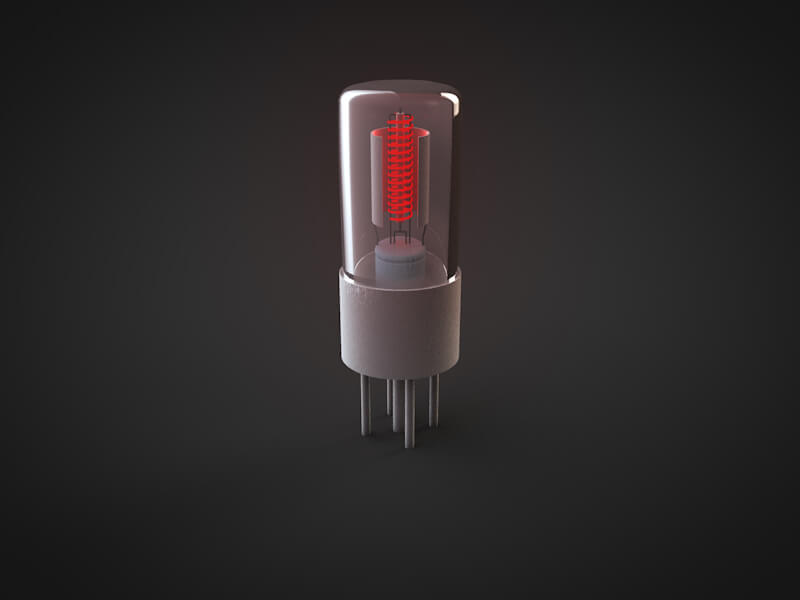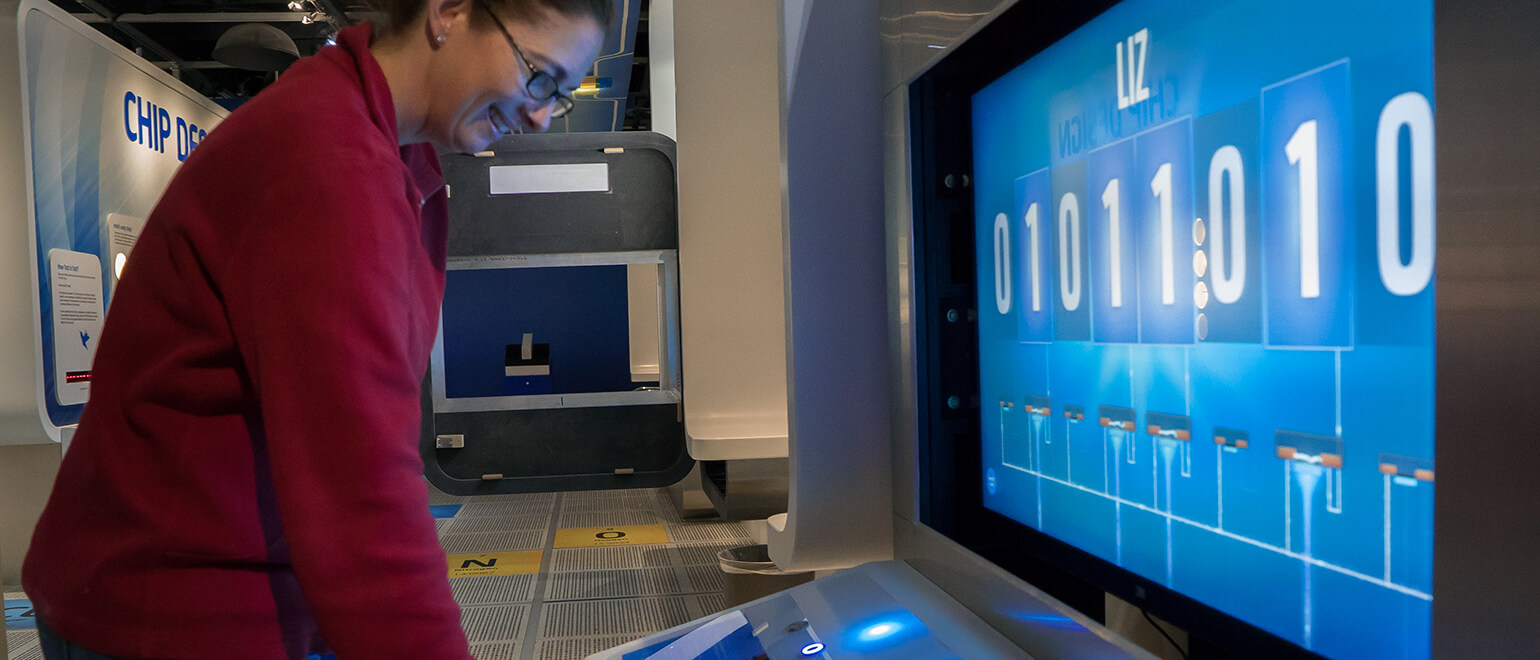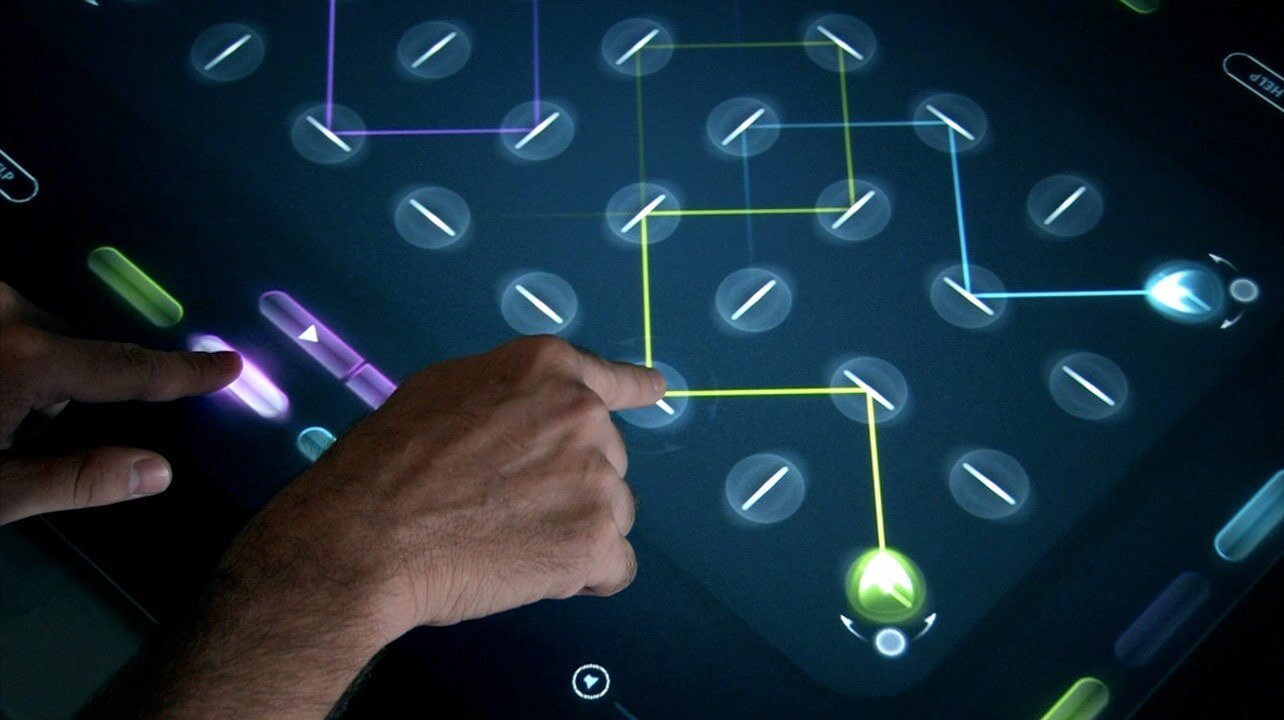INTEL
Binary Exhibit
Analog/digital interactive exhibit
The Binary Exhibit at the Intel Museum explores the history and evolution of computer technology through the lens of the binary code system. Visitors can interact with a variety of exhibits that demonstrate the inner workings of computers and how the binary code is used to process information. The exhibit includes hands-on activities, interactive displays, and state-of-the-art technology that bring the world of binary code to life. From early mechanical calculators to modern-day supercomputers, the Binary Exhibit offers a unique and engaging learning experience for visitors of all ages.
My Role
As the lead visual designer, I was responsible for creating all of the visual elements, user interface, animation and 3D modeling for the exhibit. My expertise in visual design, user interface design, animation, and 3D modeling were crucial in bringing the exhibit to life and creating an immersive and visually engaging experience for visitors. My role involved working closely with the development team to ensure that all visual elements were consistent and in line with the project's goals and objectives.
Digital Interface
The exhibit allows visitors to express themselves by learning to spell their names in letters formed with binary code, a unique and engaging way to understand this fundamental aspect of technology.
The exhibit features an interactive interface that demonstrates the flow of electricity from the analog keyboard where the visitor types in their code, to the digital display, through the transistors, and finally up to the 0/1 glass cards. This allows visitors to visualize the process of how the input from the keyboard is translated into binary code and processed by the computer.

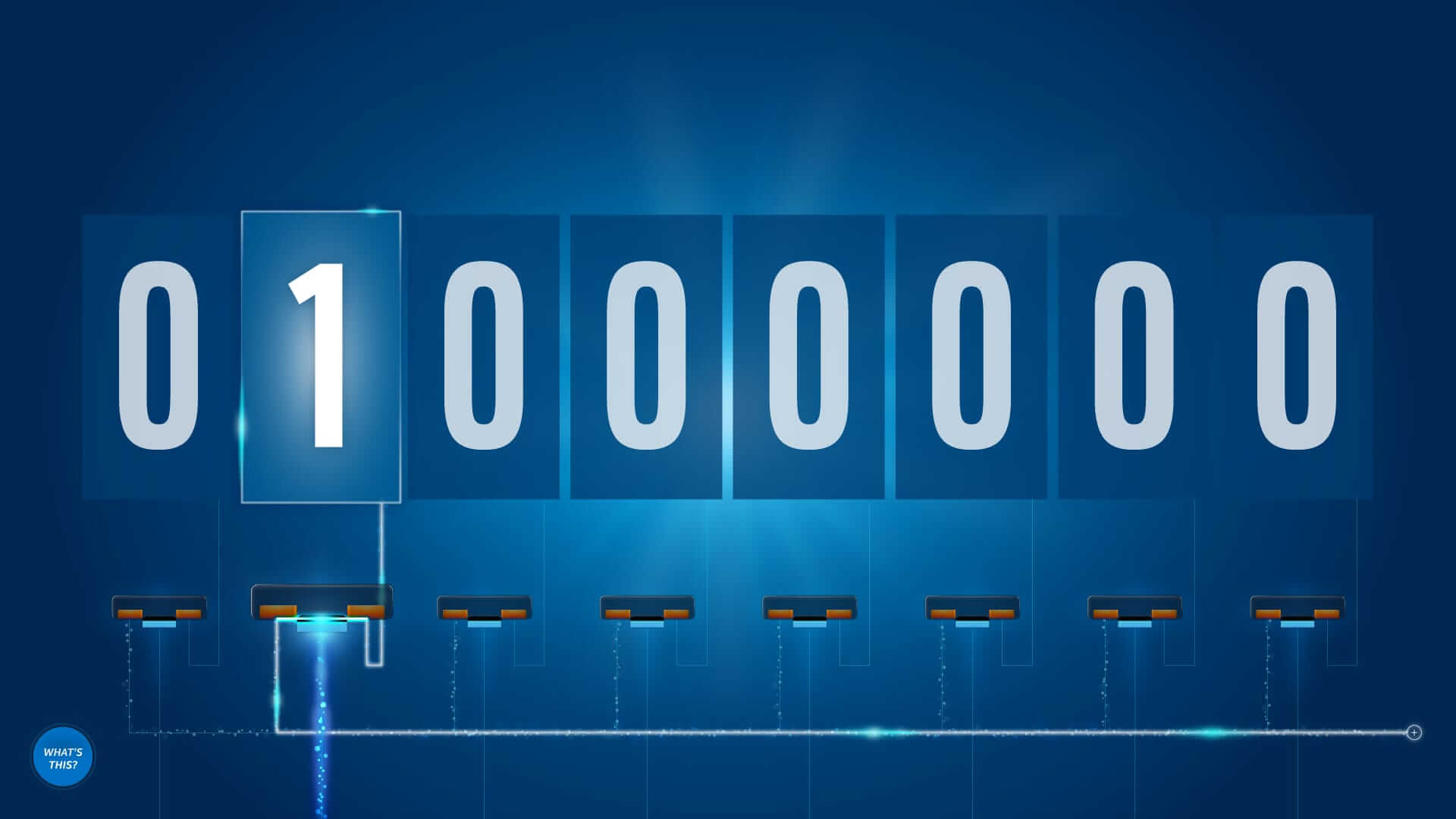

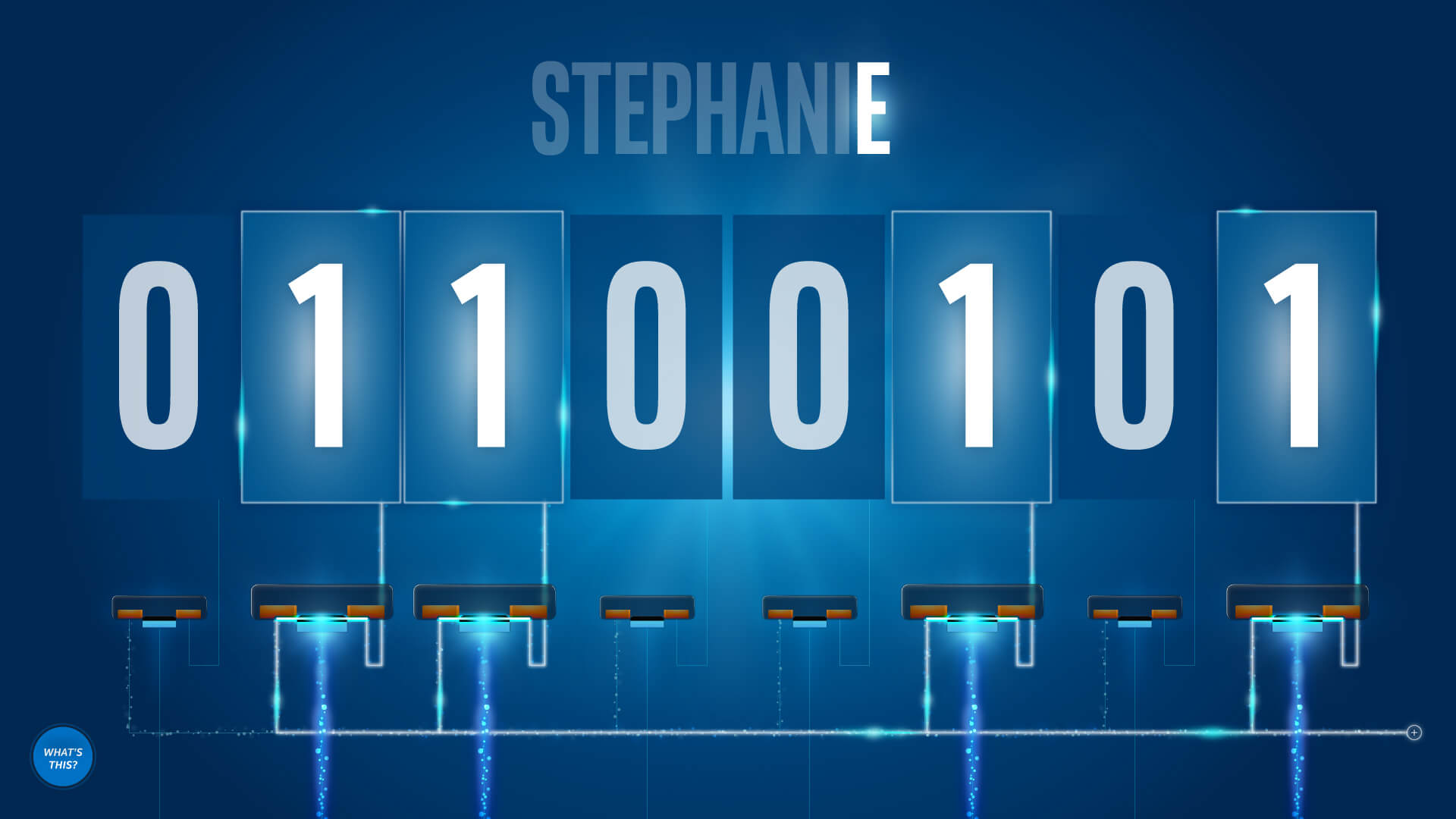
What's This?
The interface includes a "What's this?" button at the bottom left of the screen that allows visitors to learn more about the inner workings of a transistor. As the designer of the screen and the modeler of the transistor in Cinema 4D, I played a key role in creating this interactive and educational feature of the exhibit.
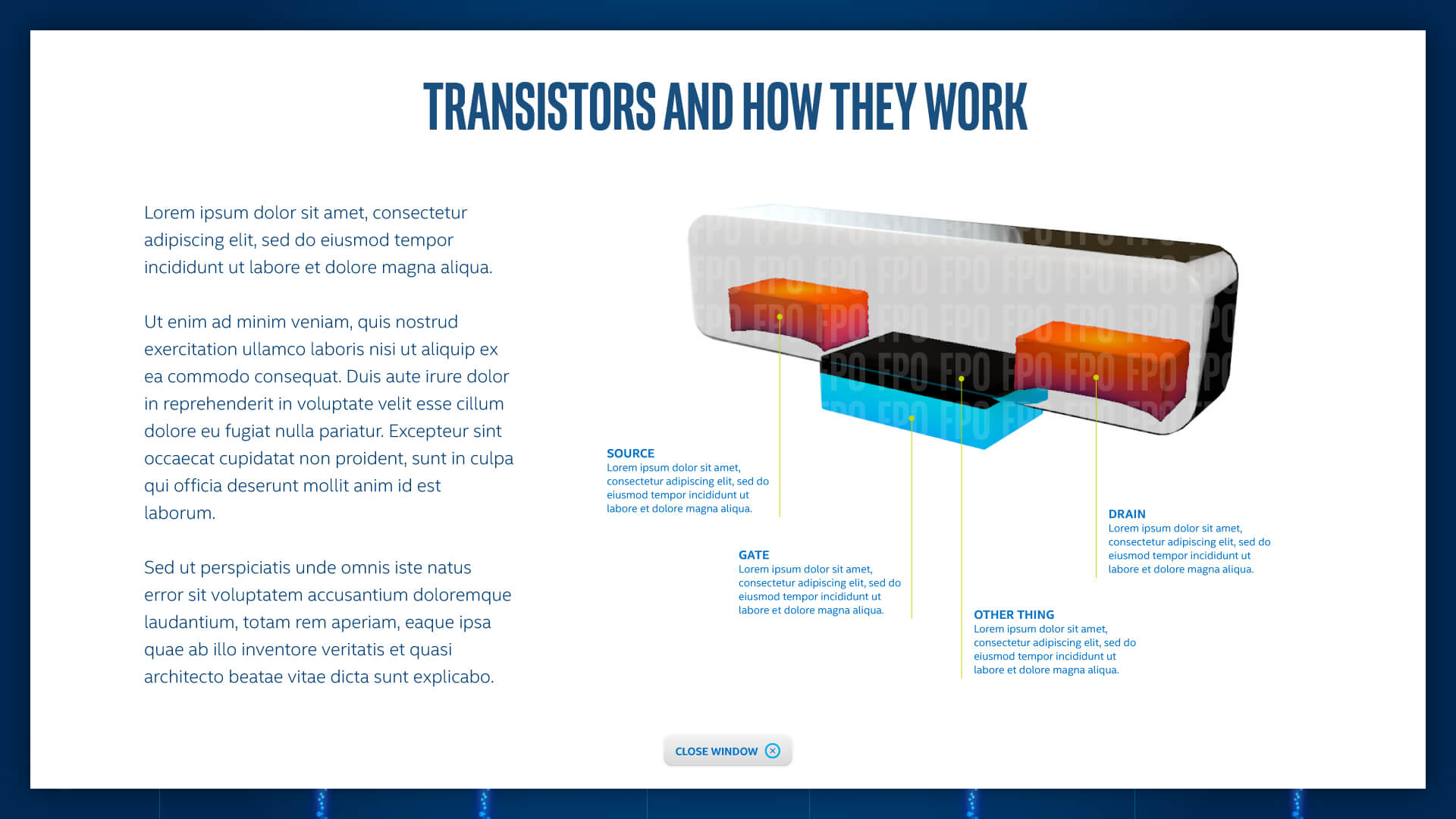
Reader Rail
The reader rail, located beneath the digital display, boasts beautifully crafted aluminum buttons surrounded by a ring of Intel Blue light. When a button is pressed, a stream of blue electricity flows from the button up into the display above, providing a visual representation of the input being processed. The reader rail is a striking and interactive element of the exhibit that helps visitors understand the connection between the physical input and the digital output.
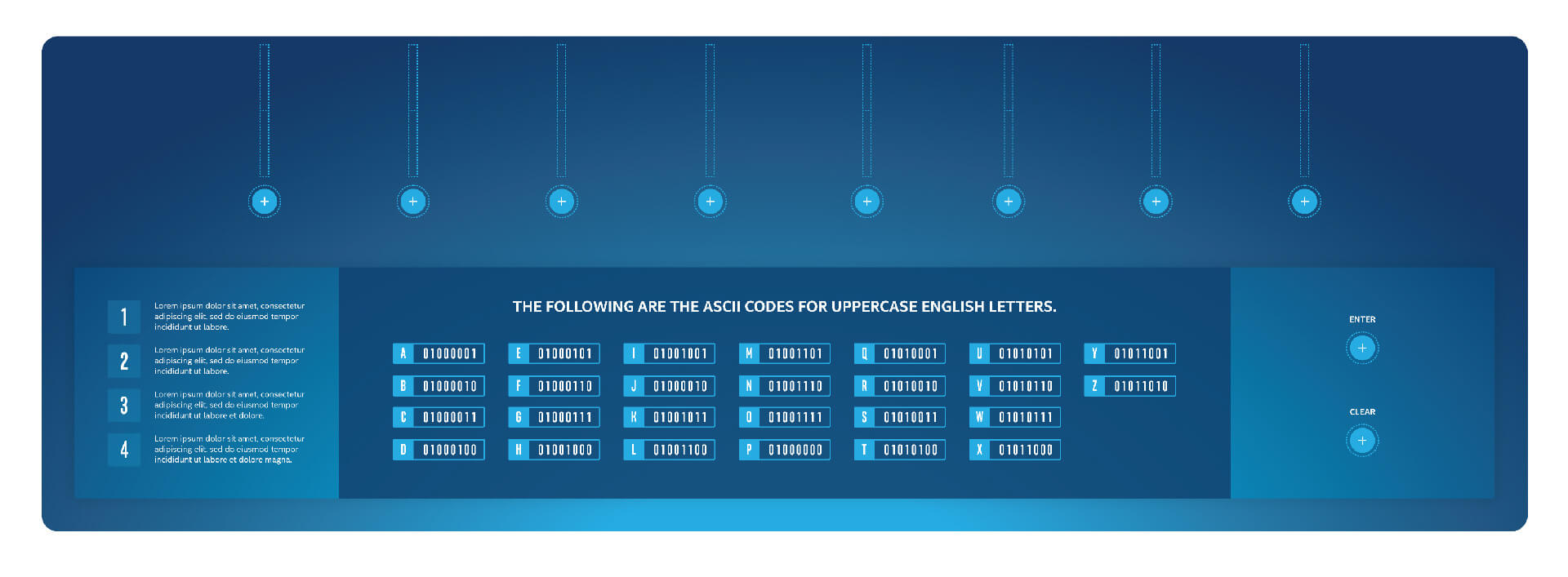
User Testing
I was responsible for the design of the printed reader rail graphic that was screen-printed onto transparent plexiglass material. We had only one opportunity to print the design due to time and budget constraints. To ensure the final product was functional, I first printed a full-size version and had users test it before final printing. This approach allowed for any necessary adjustments to be made before committing to the final print, ensuring that the reader rail was effective and user-friendly.

Transistor Concepts
I explored several concepts for the design of the transistor for the exhibit. The challenge was to find a balance between accuracy and simplicity in order to effectively communicate the inner workings of the transistor to the visitors. I had to consider the technical details as well as the aesthetics of the design to make it both informative and visually appealing.
